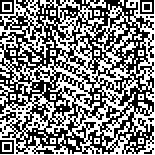燕铁斌,Hui-Chan WYC.踝背伸和跖屈肌群的最大等长收缩:脑卒中急性期患者与同龄健康老人表面肌电图对照研究[J].中华物理医学与康复杂志,2003,(4):.-
扫码阅读全文

|
| 踝背伸和跖屈肌群的最大等长收缩:脑卒中急性期患者与同龄健康老人表面肌电图对照研究 |
|
| |
| DOI: |
| 中文关键词: 最大等长收缩 表面肌电图 脑卒中 |
| 英文关键词: Maximum isometric voluntary contraction Surface electromyography Stroke |
| 基金项目:香港理工大学重点学科基金(No.A106, WYCHC),香港理工大学博士基金 (No.G-V640, TY) |
|
| 摘要点击次数: 5620 |
| 全文下载次数: 5342 |
| 中文摘要: |
| 目的比较健康老人与脑卒中急性期患者的踝背伸和踝跖屈肌群的收缩功能,为脑卒中急性期康复提供客观依据。 方法2组对象参加研究,对照组为11位健康老人,年龄62.3±5.7岁;脑卒中组为12位初发患者,年龄66.6±8.3岁。测试时下肢固定在支架上,压力传感器放在足底,肌电图的表面电极放在胫骨前肌和腓肠肌的体表上,记录踝背伸或踝跖屈时最大等长收缩、胫骨前肌和腓肠肌的肌电活动,并计算力矩和积分肌电图的变化。 结果健康老人左、右侧踝背伸和踝跖屈肌群收缩各参数之间的差异无显著性,脑卒中组患侧与健侧比较差异有显著性(P<0.05);协方差分析(年龄作为协变量)发现,脑卒中组的患侧与对照组比较,踝背伸和踝跖屈力矩、积分肌电图以及协同收缩率的差异有高度显著性(P<0.01),脑卒中组健侧与对照组的踝背伸协同收缩率差异有显著性(P<0.05)。 结论脑卒中急性期患者踝背伸和踝跖屈肌群收缩功能明显降低,增强这些肌群的收缩功能,特别是增强主动肌的收缩,抑制拮抗肌的协同收缩应作为脑卒中急性期康复的目标。 |
| 英文摘要: |
| Objective To compare muscle function of the ankle dorsiflexors and plantarflexors between stroke patients at the acute stage and age-matched healthy elderly, in an attempt to gain insight for an early rehabilitation program after stroke. MethodsTwo groups of volunteers participated in the study. One group was 11 healthy elderly aged 62.3±5.7 years and the other was 12 patients with first ever stroke aged 66.6±8.3 years. During measurement, the leg being tested was positioned on a specially designed frame, with a load cell (force sensor) attached to the ball of the foot. Surface electrodes were applied on the skin of both anterior tibialis and gastrocnemius muscles for electromyography (EMG). Torque and integrated EMG during maximum isometric voluntary contraction (MIVC) of the ankle dorsiflexors and plantarflexors were recorded and analyzed. ResultsThere were no significant differences in the MIVC of either ankle dorsiflexion or plantarflexion between the left and right sides of the healthy elderly. However, significant reduction in the ankle dorsiflexion and plantarflexion torques were found in the affected side of stroke patients(P<0.05). Analysis of covariance (with age) revealed significant differences between the affected side of stroke patients and the healthy elderly in the MIVC torque generated by ankle dorsiflexion and plantarflexion, integrated EMG of the tibialis torque generated by ankle dorsiflexion and plantarflexion integrated EMG of the tibialis anteria, as well as EMG co-contraction ratio (P< 0.01) during ankle dorsiflexion and plantarflexion. Significant difference was also found between the unaffected side of stroke patients and the healthy elderly in EMG co-contraction ratio of the ankle dorsiflexion (P<0.05). ConclusionFunction of the ankle dorsiflexors and plantarflexors in the stroke patients was greatly impaired at the acute stage after stroke. Rehabilitation program should aim to enhance ankle muscle function during the acute stage of stroke, by facilitating agonist contraction and decreasing antagonist co-contraction. |
|
查看全文
查看/发表评论 下载PDF阅读器 |
| 关闭 |